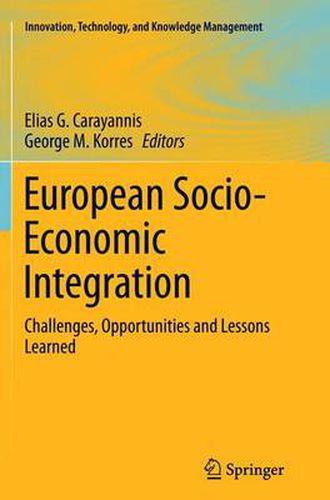Readings Newsletter
Become a Readings Member to make your shopping experience even easier.
Sign in or sign up for free!
You’re not far away from qualifying for FREE standard shipping within Australia
You’ve qualified for FREE standard shipping within Australia
The cart is loading…






This title is printed to order. This book may have been self-published. If so, we cannot guarantee the quality of the content. In the main most books will have gone through the editing process however some may not. We therefore suggest that you be aware of this before ordering this book. If in doubt check either the author or publisher’s details as we are unable to accept any returns unless they are faulty. Please contact us if you have any questions.
Economic integration is one of the most noteworthy issues in international economic policy at the end of the twentieth century. The recent examples of the European Union (EU) and the North American Free Trade Association (NAFTA) have raised important questions about the economic integration process and the possible establishment of economic unions in other parts of the world. Against the backdrop of the financial crisis in Europe and prospects of increasing integration in Asia, this volume showcases research from an international array of researchers to provide a basic understanding of the current issues, problems, challenges, and opportunities for achieving integration, addressing both empirical and theoretical aspects of such topics as monetary union, social policy reform and social union, public finance and technology policy. The chapters in Part 1 are focused primarily on economic issues, while Part 2 covers on social policy, the welfare state, and political reforms, with a particular emphasis on the European Union. Among the questions addressed:
What are the main determinants and implications for socio-economic integration? How can economic policy influence the growth and integration process? Why is innovation important for regional economic development? What has been the policy response so far and what lessons have we learned from it? And finally, what are our action lines for the future?
$9.00 standard shipping within Australia
FREE standard shipping within Australia for orders over $100.00
Express & International shipping calculated at checkout
This title is printed to order. This book may have been self-published. If so, we cannot guarantee the quality of the content. In the main most books will have gone through the editing process however some may not. We therefore suggest that you be aware of this before ordering this book. If in doubt check either the author or publisher’s details as we are unable to accept any returns unless they are faulty. Please contact us if you have any questions.
Economic integration is one of the most noteworthy issues in international economic policy at the end of the twentieth century. The recent examples of the European Union (EU) and the North American Free Trade Association (NAFTA) have raised important questions about the economic integration process and the possible establishment of economic unions in other parts of the world. Against the backdrop of the financial crisis in Europe and prospects of increasing integration in Asia, this volume showcases research from an international array of researchers to provide a basic understanding of the current issues, problems, challenges, and opportunities for achieving integration, addressing both empirical and theoretical aspects of such topics as monetary union, social policy reform and social union, public finance and technology policy. The chapters in Part 1 are focused primarily on economic issues, while Part 2 covers on social policy, the welfare state, and political reforms, with a particular emphasis on the European Union. Among the questions addressed:
What are the main determinants and implications for socio-economic integration? How can economic policy influence the growth and integration process? Why is innovation important for regional economic development? What has been the policy response so far and what lessons have we learned from it? And finally, what are our action lines for the future?